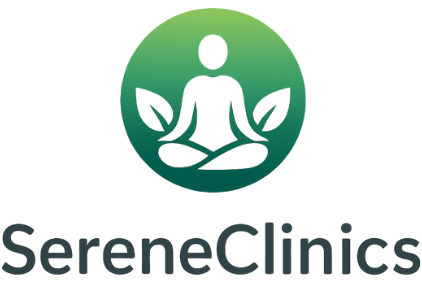Law of Minimum Dose in Homeopathy
Homeopathy is a unique method of healing that uses very diluted substances to encourage the body to heal itself.
Central to this practice is the Law of Minimum Dose, which suggests that smaller doses can often achieve greater therapeutic effects.
In this discussion, we will look into the ideas behind homeopathy and how it functions. Law of Minimum Dose, its benefits and limitations, and how it relates to other foundational concepts in homeopathy.
Learn how this interesting technique can provide personalized treatment options while minimizing side effects.
Key Takeaways:
Contents
- 1 What Is Homeopathy?
- 2 What Is the Law of Minimum Dose?
- 3 What Are the Benefits of Using the Law of Minimum Dose in Homeopathy?
- 4 Homeopathy Usage and Effectiveness Statistics
- 5 How Is the Minimum Dose Determined in Homeopathy?
- 6 What Are the Limitations of the Law of Minimum Dose?
- 7 How Is the Law of Minimum Dose Related to Other Homeopathic Principles?
- 8 Frequently Asked Questions
- 8.1 What is the Law of Minimum Dose in Homeopathy?
- 8.2 Why is the Law of Minimum Dose important in Homeopathy?
- 8.3 How does the Law of Minimum Dose work in Homeopathy?
- 8.4 Is the Law of Minimum Dose the same as “less is more”?
- 8.5 Can the Law of Minimum Dose be applied to all homeopathic remedies?
- 8.6 Is the Law of Minimum Dose the only important principle in Homeopathy?
What Is Homeopathy?

Homeopathy is a healing approach developed by Samuel Hahnemann in the late 1700s. It focuses on encouraging the body’s natural healing ability through highly diluted solutions called homeopathic remedies.
This approach suggests that substances causing illness symptoms in healthy people can, when diluted, promote healing in those with similar illnesses. Homeopathy is used to treat long-term diseases and improve health results, backed by growing scientific research and studies worldwide, as highlighted by the respected source from Britannica.
Homeopathic practitioners choose specific remedies to customize treatments based on each patient’s medical history and bodily reactions.
What Is the Law of Minimum Dose?
The Law of Minimum Dose in homeopathy is a principle that states that smaller doses of medication can be more effective. This idea is based on the Arndt-Schultz law, which shows that tiny amounts of therapeutic substances can produce a significant biological effect. For those interested in a comprehensive overview, this analysis by Wikipedia covers the full principles of the Arndt-Schultz rule and its implications.
This law is central to homeopathic practice, where substances are diluted so much that they may have little or no active ingredient, yet still have frequencies that can affect the body’s healing processes.
Homeopathic practitioners carefully choose doses to prevent negative drug interactions while aiming for the best treatment results.
What Are the Principles of Homeopathy?
Homeopathy is based on key ideas such as ‘like cures like,’ tailoring treatment to each person, and the idea of a life energy. This offers a distinct way of healing compared to regular medicine.
This distinctive method is grounded in the belief that substances causing specific symptoms, when administered in diluted forms, can stimulate the body’s healing processes. For instance, if onions can cause tears in a person without allergies, they might trigger the same hay fever symptoms in someone who suffers from it.
Customizing treatment means each patient gets a remedy suited to their particular illness, acknowledging that even with the same diagnosis, people can have different symptoms.
The key idea, similar to energy healing, emphasizes restoring balance in the body to help it recover naturally. This idea is backed by new concepts such as morphic resonance, which proposes that there is a memory of shapes or patterns that can affect healing.
Related insight: Homeopathy: Principles, Practices, and Evidence-Based Integration highlights how these concepts are integrated to provide a comprehensive approach to treatment, setting it apart from more common medical treatments.
How Does the Law of Minimum Dose Work?
The Law of Minimum Dose operates on the premise that the therapeutic effects of homeopathic remedies arise from their electromagnetic signals and quantum properties, which persist even when substances are highly diluted. This phenomenon is attributed to the unique water structures formed during the dilution process, allowing the water to retain resonant frequencies that can influence the body’s healing mechanisms. As practitioners use these weakened solutions, they work with the changing strength of the remedies, causing a healing response that might not be visible with standard treatments.
This complex link between the diluted substances and the body’s physical processes shows how important electromagnetic signals are in treatment. For context, a comprehensive overview by ScienceDirect explores how homeopathy and vibrational medicines are interconnected through these mechanisms.
When creating a homeopathic remedy, the process of repeatedly thinning and mixing the solution causes the water to develop specific characteristics. These frequencies are known to engage with cell receptors, helping a biological communication system that improves cell function and supports balance in the body.
The Law of Minimum Dose stresses the importance of using tiny amounts of substances. It also shows how energy interactions can cause significant physical changes, helping the body to heal naturally.
What Are the Benefits of Using the Law of Minimum Dose in Homeopathy?
Using the Law of Minimum Dose in homeopathy offers many benefits for patients and improves treatment results. It reduces side effects often seen with regular medicines.
This method makes homeopathic treatments more effective by allowing doctors to customize treatments for each person, while also lowering the chances of temporary worsening of symptoms as the body starts to heal.
This leads to a treatment approach that supports a better healing environment for patients with ongoing illnesses.
Homeopathy Usage and Effectiveness Statistics
Homeopathy Usage and Effectiveness Statistics
Homeopathy Statistics: Prevalence of Homeopathy Use
Homeopathy Statistics: Regulatory and Effectiveness Assessment

The Homeopathy Usage and Effectiveness Statistics The dataset shows how common and assessed homeopathy is as a treatment method. Within this dataset, two primary areas of focus emerge: the prevalence of homeopathy use among different demographics, and the regulatory and effectiveness assessments through scientific reviews.
Homeopathy Statistics point out that in 2012, 5.0% of adults and 1.8% of children used homeopathic remedies. These figures suggest a moderate level of acceptance and utilization of homeopathy in health practices among these groups. The usage is more pronounced in European countries like Germany, Austria, Switzerland, and France, where 10.0% of the population utilizes homeopathic treatments. This higher prevalence in Europe may be attributed to greater cultural acceptance and integration of homeopathy into traditional health care systems.
The dataset also examines the Regulatory and Effectiveness Assessment, highlighting that there have been 57 systematic reviews of homeopathy studies, encompassing 176 individual studies. These reviews and assessments are important for deciding if homeopathy is scientifically valid and effective. Many studies show that there is ongoing interest in this area, as scientists and regulators work to assess how well homeopathic treatments work.
In summary, the data illustrates a notable use of homeopathy in certain populations and regions, while also highlighting the significant scientific effort invested in assessing its effectiveness. This dual focus reflects the complexity of homeopathy’s role in health care, balancing cultural factors with scientific inquiry.
1. Minimizes Side Effects
One of the primary advantages of the Law of Minimum Dose is its ability to minimize side effects, distinguishing homeopathy from conventional treatments, which often come with a range of adverse reactions. By using highly diluted solutions, homeopathy reduces the likelihood of negative pharmaceutical effects while promoting the healing response of the immune system. This careful approach to dose selection significantly lowers the risk of homeopathic aggravation, ensuring that patients receive therapeutic benefits with minimal discomfort.
Research has shown that this principle can lead to positive outcomes for patients suffering from chronic conditions like allergies or migraines, where traditional medications often induce unwanted side effects such as drowsiness or gastrointestinal issues.
A study published in the “Journal of Alternative and Complementary Medicine” noted that 75% of participants experienced symptom relief without any notable side effects when treated with homeopathic remedies.
These findings highlight that homeopathy can offer safe and useful treatment choices for different health issues. It allows practitioners to meet the specific needs of their patients while promoting a more complete approach to health care.
2. Increases Effectiveness
The Law of Minimum Dose improves homeopathic treatments by providing personalized care and carefully choosing remedies. This method means each patient gets the dose that suits their health needs best. By considering the patient’s specific medical history and disease symptoms, homeopathic practitioners can improve clinical results and promote a more effective healing process. This patient-centered approach is integral to achieving successful treatment effects, particularly for chronic diseases.
Using this method, practitioners thoroughly study the emotional and physical parts of each patient. This helps in choosing remedies that fit individual health problems.
This results in a better connection between patients and practitioners, creating a setting where the root causes of health issues can be handled successfully.
Homeopathy focuses on using very small doses of substances, aiming to improve healing and reduce side effects.
This focused approach sets homeopathy apart as a practical choice for those looking for complete care.
3. Personalized Treatment
Individualized treatment is important in homeopathy, which follows the Law of Minimum Dose. This approach lets practitioners create specific healing plans for each patient, considering their unique symptoms, medical history, and reactions to past treatments. This method is especially helpful for treating long-term illnesses that require a thorough knowledge of the patient’s overall health and daily routines.
By emphasizing individualization, homeopathic practitioners can provide more effective care and improve the likelihood of positive clinical outcomes.
Giving individual attention makes patients happier and strengthens the bond between the practitioner and patient, where talking openly is important for effective treatment.
When treatments are customized to fit a person’s specific needs, they usually feel more in control of their health process. Patients say they feel heard and appreciated, which can greatly increase their willingness to follow treatment plans.
Homeopathy focuses on the entire person, addressing symptoms and supporting both emotional and mental health. This shows the need for personalized care that makes each person’s life better.
How Is the Minimum Dose Determined in Homeopathy?
To select the right minimum dose in homeopathy, it’s important to understand each person’s unique characteristics. This leads to a personalized dosage based on their reaction to treatments and specific health issues.
Homeopathic practitioners consider many factors, like the patient’s medical history and past treatment responses, to determine the appropriate dose.
This careful adjustment of dosage is essential for achieving the best therapeutic outcomes while preventing possible negative reactions.
1. Individualized Dosage
In homeopathy, changing the dose to match each individual’s health needs is important to make sure even the smallest dose works well. Homeopathic practitioners carefully evaluate the patient’s symptoms, medical history, and responses to previous remedies to determine the most appropriate dosage and potency. This personalization improves treatment results and aids a better recovery.
In this method, things like age, lifestyle, emotions, and general health are important when choosing the right dosage. A practitioner may also consider environmental influences and any existing health conditions that could impact treatment outcomes.
By aligning the remedy with these individualized characteristics, the likelihood of a positive response increases, leading to improved patient satisfaction and health restoration. Knowing the importance of adjusting the dosage for each patient strengthens the relationship between doctor and patient. It forms the basis of effective homeopathic treatment, ensuring that each person gets care suited to their individual needs.
2. Sensitivity to Remedies
How sensitive a person is to treatments is important in deciding the smallest amount needed in homeopathy, as each person can respond differently to substances due to their individual biological reactions. A detailed evaluation by homeopathic practitioners helps find these sensitivities, allowing for a treatment plan that takes the patient’s unique responses into account. Knowing this information allows you to adjust your personal dosage and makes sure the treatment works.
For instance, a patient with heightened sensitivity might experience significant improvements with lower dilutions, while another may require higher dilutions to attain therapeutic benefits.
This variation can dramatically influence patient outcomes, highlighting the importance of careful observation and adjustment of remedy strength.
Knowing how sensitive a patient is allows doctors to determine how fast to change treatment if side effects happen. This influences their decisions about changing the dosage in later visits.
These customized methods show how homeopathy uses individual experiences to direct the healing process.
3. Potency Selection

Potency selection is a critical aspect of homeopathy that directly influences the effectiveness of the minimum dose administered to patients. Homeopathic practitioners use different methods to choose the right strength of remedy for each person by looking at their specific symptoms, past medical conditions, and how well they generally respond to treatment.
This detailed approach also considers factors like the patient’s age, energy levels, and emotional condition, as these can greatly impact their response to treatment.
Past treatments and their results are important in adjusting the selected strength. By examining specific cases thoroughly, practitioners make sure the chosen treatment matches current symptoms and supports long-term recovery.
Finally, this process is important for customizing treatment to the person, helping to build a closer link between the homeopathic remedy and the patient’s overall health experience.
What Are the Limitations of the Law of Minimum Dose?
Homeopathy’s Law of Minimum Dose has multiple benefits, but it can also be challenging for practitioners.
One major issue is that results can be slow, particularly for long-lasting illnesses, as gentle homeopathic treatments may take a while to show noticeable effects. This method might not be right for urgent problems that require a quick response, so it’s important to carefully assess the patient’s needs.
Successfully applying this law demands skill and experience from homeopathic practitioners.
1. Slow Results
One of the key limitations of homeopathy is that patients may experience slow results in their healing process, particularly when addressing chronic diseases. This gradual treatment approach is a main aspect of homeopathy. Remedies help increase the body’s natural energy and aid healing over time. Although this can help with long-term health, it might cause annoyance for patients who want quick relief from their symptoms.
Homeopathic treatment focuses on improving health by addressing the person’s overall wellness, not just the symptoms.
Patients need to know that recovery takes time and trusting the process is important. Recognizing this is important, because wanting fast outcomes can impact choices and lead to letdowns.
By embracing the slower pace, individuals can appreciate subtle improvements, which often signify deeper healing. Encouraging a mindset that focuses on the long-term benefits of treatment can improve the overall experience for patients, helping them achieve a deeper and more lasting recovery from their illnesses.
2. Not Suitable for Acute Conditions
Homeopathy, particularly under the Law of Minimum Dose, may not be suitable for acute conditions requiring immediate medical intervention, as its gentle and gradual healing approach is typically geared toward chronic diseases. In emergencies like serious infections or sudden pain, regular treatments might be needed to quickly help and tackle the main problems. This limitation highlights the need for thorough patient assessment to determine the most appropriate treatment strategy.
Homeopathic treatments are ineffective for asthma or heart attacks. These situations require quick response and strong medicine to handle the problem.
Acute health emergencies are unpredictable and often require immediate medical attention that homeopathy cannot offer, highlighting its limitations as the only treatment option.
Recognizing these factors can lead to better health outcomes, reminding individuals that while homeopathy has its place, it should not replace orthodox medical care when acute issues arise.
3. Requires Expertise
Using the Law of Minimum Dose in homeopathy well demands skill from practitioners. It requires changing treatment for each person, based on homeopathic rules and the specific traits of each patient.
To achieve this, practitioners undergo extensive training that covers the fundamentals of homeopathic theory, materia medica, and clinical practice.
They learn to understand the details of patient cases, including emotional and psychological elements, which are important in choosing remedies. Experienced homeopaths improve their skills by studying and getting regular guidance, which helps them notice slight changes in a patient’s health.
Knowing these parts well makes it easier for them to use the Law of Minimum Dose, and it also supports a method that benefits the patient’s health and recovery.
How Is the Law of Minimum Dose Related to Other Homeopathic Principles?
The Law of Minimum Dose is strongly connected to main ideas in homeopathy, such as ‘like cures like,’ customized treatment, and the energy that helps recovery.
These principles operate together to define the complete method of homeopathy, where each idea backs up the others to offer detailed patient care.
Knowing how these principles interact is important for homeopathic practitioners to make successful treatment plans.
1. Like Cures Like
The principle of ‘like cures like’ is foundational to homeopathy and directly relates to the Law of Minimum Dose, as it posits that a substance causing symptoms in a healthy person can be used to treat similar symptoms in a sick individual. This idea guides the choice of homeopathic treatments and highlights the need to give these substances in the smallest possible amount to encourage healing without stressing the body. Together, these principles create a detailed method to bring back health.
For example, if a person experiences symptoms of anxiety from consuming too much caffeine, a homeopath might prescribe a remedy made from coffee in a highly diluted form. This remedy encourages a mild healing response by reminding the body of the symptoms it is trying to fight off.
The Law of Minimum Dose is important here, showing that small amounts can be effective. By using tiny quantities of substances, it is thought that the body activates its natural healing processes, helping recovery without the side effects that usually come with standard medicines.
This treatment method focuses on tailoring care to each person and considers all parts of healing, highlighting how homeopathy deals with the various parts of health in its own way.
2. Individualization

Individualization is a core principle of homeopathy that emphasizes tailoring treatment plans to the unique needs of each patient, closely aligning with the Law of Minimum Dose. By evaluating the particular symptoms, past medical details, and biological reactions of patients, homeopathic practitioners can find the best minimum dose and mix of treatments to improve the healing process. This customized method strengthens the relationship between the practitioner and the patient, improving the success of the treatment.
The significance of individualization extends beyond mere symptom relief; it plays a fundamental role in how patients respond to treatment.
Each individual has a unique constitution and sensitivity, which means that the same remedy may have dramatically different effects based on personal health profiles.
When doctors apply the Law of Minimum Dose, they honor the individual aspects of healing and make sure each patient’s treatment is carefully adjusted.
This personalized approach usually leads to better patient results because the treatments address root causes instead of just treating symptoms, improving overall health.
3. Vital Force
In homeopathy, the idea of life energy is important. It relates to the body’s natural healing ability and the belief that smaller amounts of medicine work better. This principle suggests that by enhancing the body’s fundamental energy with carefully selected homeopathic treatments, practitioners can improve the body’s natural ability to heal. They use the smallest doses to avoid overloading the system. Grasping how life energy interacts with treatments is important for successful homeopathic practice.
Life force is more than just enhancing health; it includes the complete view of homeopathy, which focuses on personalized care. Each patient has a unique energy that affects their health and response to illness.
Homeopaths customize their treatments to match the patient’s unique body and needs, leading to deeper healing. The Law of Minimum Dose proposes that tiny amounts of natural substances can have a significant effect on the body’s energy.
This finds a middle ground between effectiveness and safety, enabling practitioners to use the body’s natural ability to heal while acknowledging its boundaries.
Frequently Asked Questions
What is the Law of Minimum Dose in Homeopathy?
The Law of Minimum Dose in Homeopathy means using the smallest amount of a substance needed to trigger healing in a patient. This means that the remedy should be diluted and succussed (shaken vigorously) to the point where there is only a trace of the original substance remaining.
Why is the Law of Minimum Dose important in Homeopathy?
The Law of Minimum Dose is significant because it guarantees that the treatment is mild and safe, yet still works well to address the person’s symptoms. It also helps to prevent any possible side effects from the remedy, making it a safe form of treatment.
How does the Law of Minimum Dose work in Homeopathy?
The Law of Minimum Dose works by stimulating the body’s own healing mechanisms. By using a highly diluted and potentized remedy, the body is able to recognize and respond to the energetic signature of the remedy, resulting in a curative response.
Is the Law of Minimum Dose the same as “less is more”?
Yes, the Law of Minimum Dose is often referred to as “less is more” as it follows the principle that the more diluted a remedy is, the more potent and effective it will be in treating the individual’s symptoms.
Can the Law of Minimum Dose be applied to all homeopathic remedies?
Yes, the Law of Minimum Dose can be applied to all homeopathic remedies. However, the strength and concentration might change based on a person’s symptoms and the kind of treatment used.
Is the Law of Minimum Dose the only important principle in Homeopathy?
No, the Law of Minimum Dose is one of the important principles in Homeopathy, but it is not the only one. Other principles such as “like cures like” and individualization are also essential in the practice of Homeopathy.

Sheetal Sharda has a background in CS. She got an interest in Holistic living back in 2018, and has since started exploring more into Naturapathy, Holistic Living, Yoga, and more. She got inspired to start SereneClinics to help people find reliable centers across the world.





